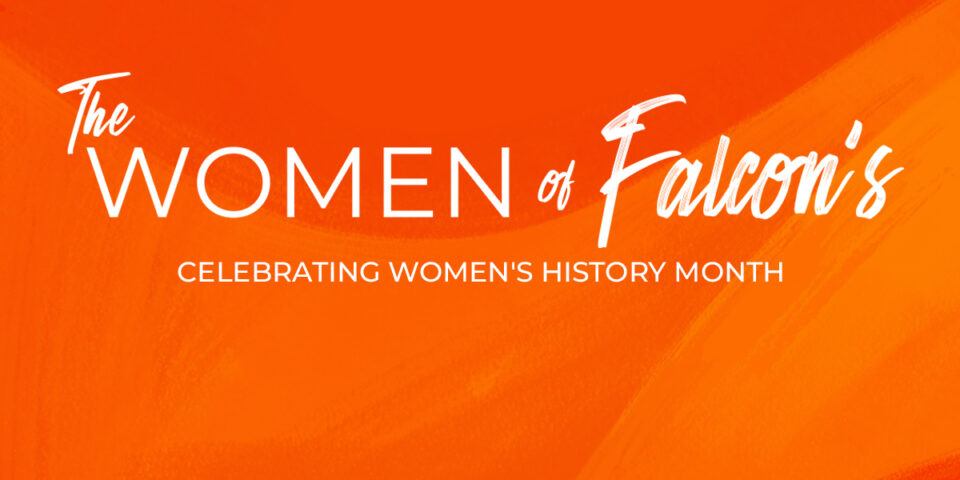World-Building
When looking at modern-day attraction design, the first thing we must keep in mind is the guest experience. Simply stated, what do you want your guests to experience and take away from your attraction, ride, or experience?
One of the most overutilized buzz words used in the industry right now is immersive. To pull away from that, I find it more helpful to specify what the act of immersion is accomplishing for guests. We can break this down into the idea of world-building, or a sense of place-making, that allows guests to understand and suspend their disbelief as to where they are or how they got there. Creating a space for a themed experience can be an exciting and daunting exercise, but it is important to keep in mind who your audience is and how they will engage within the world you are designing for them.

Fantastical concept art from Lotte World Adventure Shenyang.
It all starts with a story. Because the story answers basic questions about what is happening and where we are, it’s one of the most important tools in our industry. The storyline gives us cues to the who, what, when, where, and why that help guests understand some of the basic ideas of place and experience. Regarding world-building, these ideas are best translated through our five senses.
People are programmed to make quick judgments. This can sound like a bad thing at first, but it’s very natural and is possibly related to our built-in survival instincts. This could be as simple as hearing a siren and understanding that there is an emergency vehicle approaching or catching the wafting scent of tasty food and suddenly realizing you are very hungry. While we are no longer utilizing these instincts for survival in the same way our ancestors did, we use these same tools to create accelerated decisions that help us understand and deal with our surroundings. Our brains do a very quick bit of math as we link knowledge and previous experiences together in a kind of equation that helps us engage with all types of things.
The goal in world-building is to utilize this sensory information to trick guests’ brains so they can understand this foreign world they’re navigating, and in doing so, suspend their disbelief. In short, the faster that guests are able to make these connections, the more likely they are able to suspend their disbelief and buy into the experience.
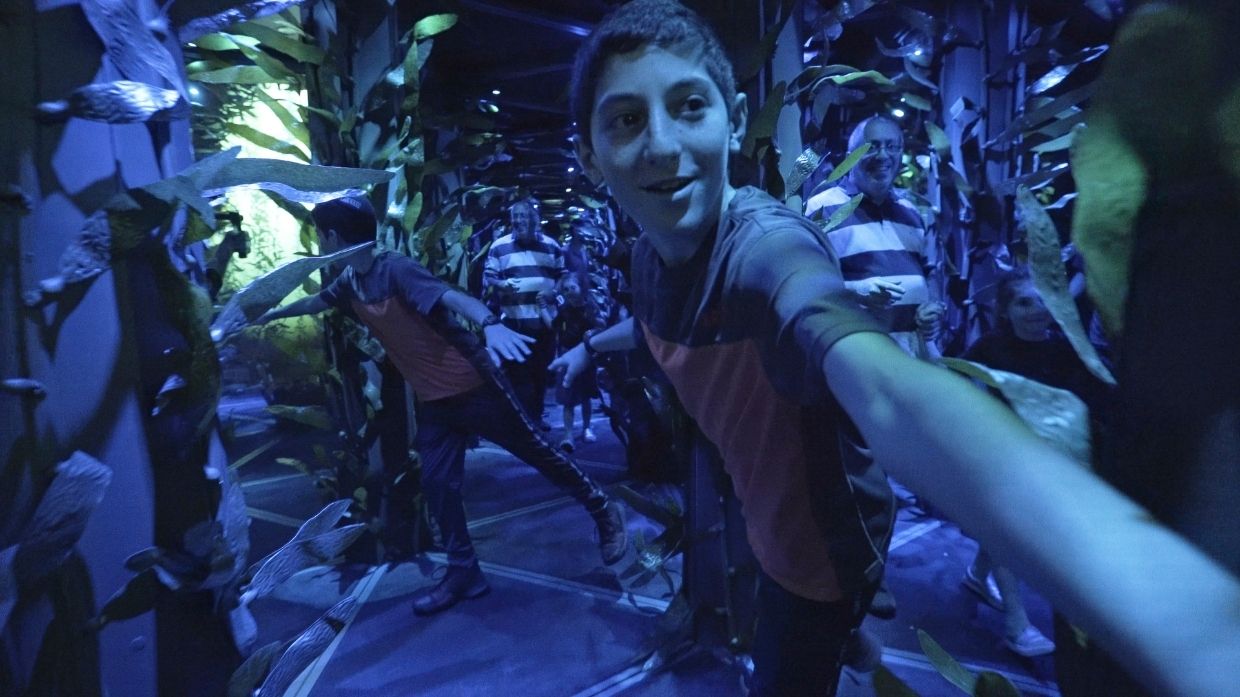
A guest is transported to underwater realms at National Geographic Encounter: Ocean Odyssey.
If I haven’t lost you yet, please do me a favor. Read the next few lines, and then close your eyes and take a deep breath.
Think about walking down Main Street USA, whether at Disneyland or Magic Kingdom. What do you see? What do you hear? What do you smell?
Now pause, close your eyes, and take a deep breath.
I hope a big grin is forming on your face as you remember this happy place and the many sensory ways that you are able to relive these memories. I will always remember the brightly colored balloons, the scent of fresh popcorn, and the clip-clop of the horse-drawn trolleys that create a sense of nostalgia that I can’t help but love. This is world-building at its prime. This is a singular place that is supported through multiple aspects of design and experience that all work together to create a unified world.
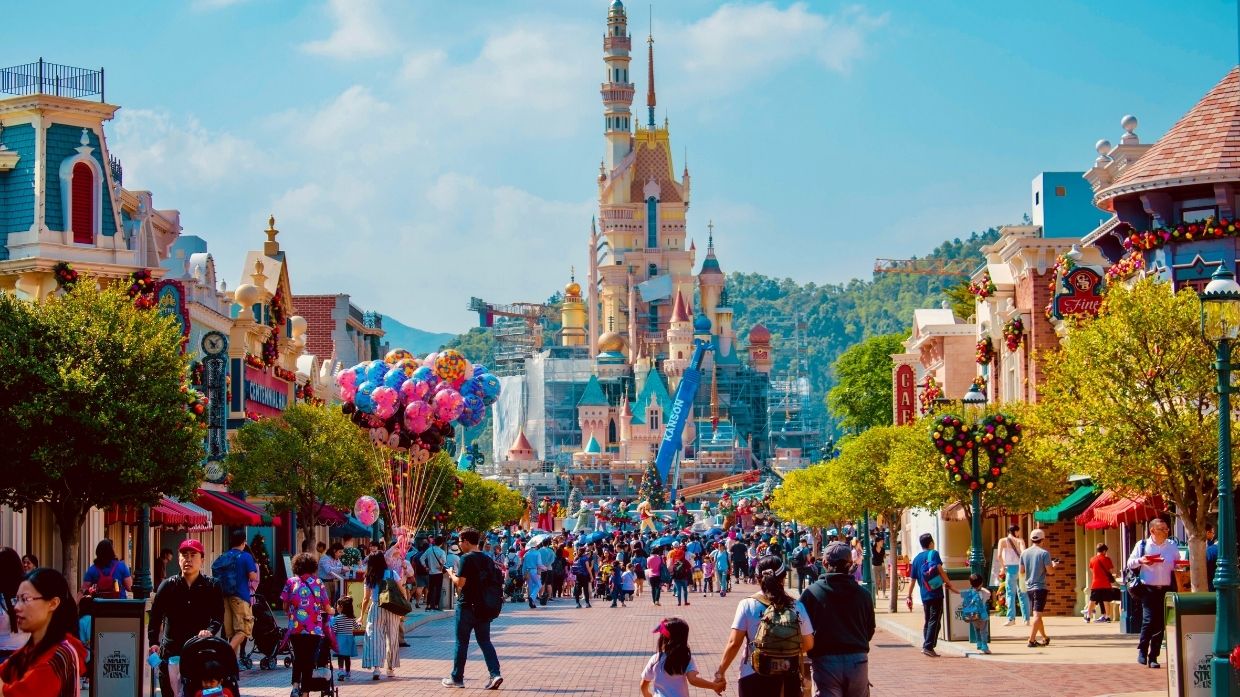
Disneyland, Hong Kong Disneyland Resort, Hong Kong. Photo by Kon Karampelas on Unsplash
Let’s examine something much more pedestrian, like Starbucks. There is a distinct reason why you know exactly where you are and what to expect when you walk into this coffee shop. This is also why my dog always looks wistfully at me, awaiting her puppuccino, when she sees me get back in the car with a coffee cup. The five senses are a quick and easy way to consider world-building because if you have a design that fully engages them, then you are more likely to create an entirely immersive place.
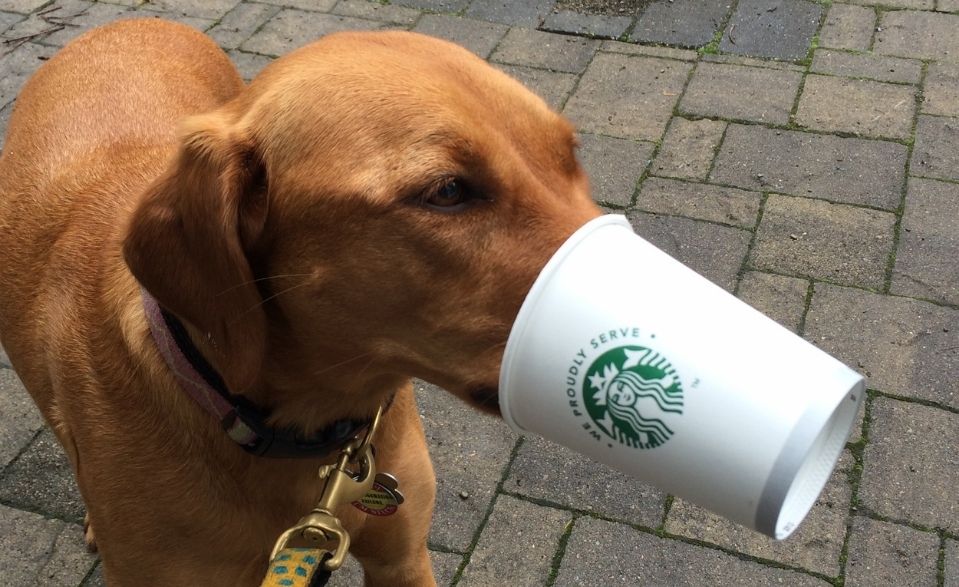
Kaylie enjoying her puppuccino.
One of the most important parts of world-building, and one of my favorites, is being able to home in on your audience by relating to its distinct culture. Culture is a source of identity and pride for people all over the world. Our culture is our personal background, which, like our previous experiences relating to the five senses, can help us determine basic ideas of people and places.
When designing an attraction, it is very important to understand where your audience is starting from, and more importantly, what they are contributing to the experience. Some important questions we keep in mind when designing attractions at Falcon’s are:
- What is the primary language?
- What is the region like, both geographically and meteorologically?
- What is the demographic of guests?
These may seem like basic questions, but they can help determine how your audience will engage with the world you are creating. One of my favorite questions can sound odd: Do people use the word I or we more often, based on their culture? Designing for a culture where there is more individualistic thought is entirely different than designing for a culture that is based more on a collective thought. There are many questions to keep in mind, and the answers determine the foundation of your story and world.
I could discuss culture and linguistics for far longer than I’m sure you would care to read, but this ties directly into my last, and if not most important point. DO YOUR RESEARCH. It is critical to understand the details behind the world that you are trying to create, as well as its limitations and opportunities. When it comes to research, be inquisitive, ask questions, even the odd ones, like “If someone made a sandwich in this world, what kind of bread would they use?” I warned you it was odd, but being oddly inquisitive helps you discover the path to take so that guests can truly become absorbed in your world, with or without the gluten.
Meet the Author
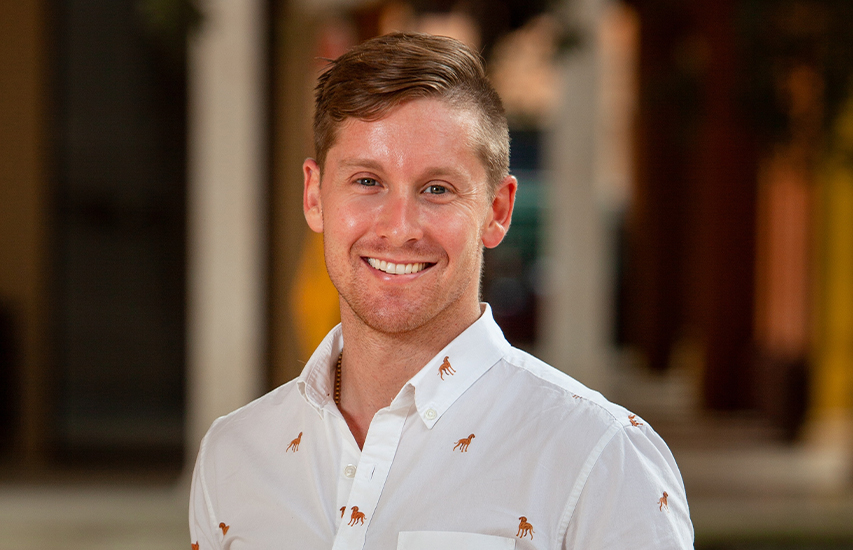
Charlie Jicha
Production Designer
To Charlie, environmental design is just as important as the design of the E ticket attraction. He approaches theme park design as a 360-degree set, built for guests to inhabit and explore, with activation and engagement from performers. Charlie focuses on invoking a deep sense of emotional storytelling for every guest—from the big picture down to the smallest details.


